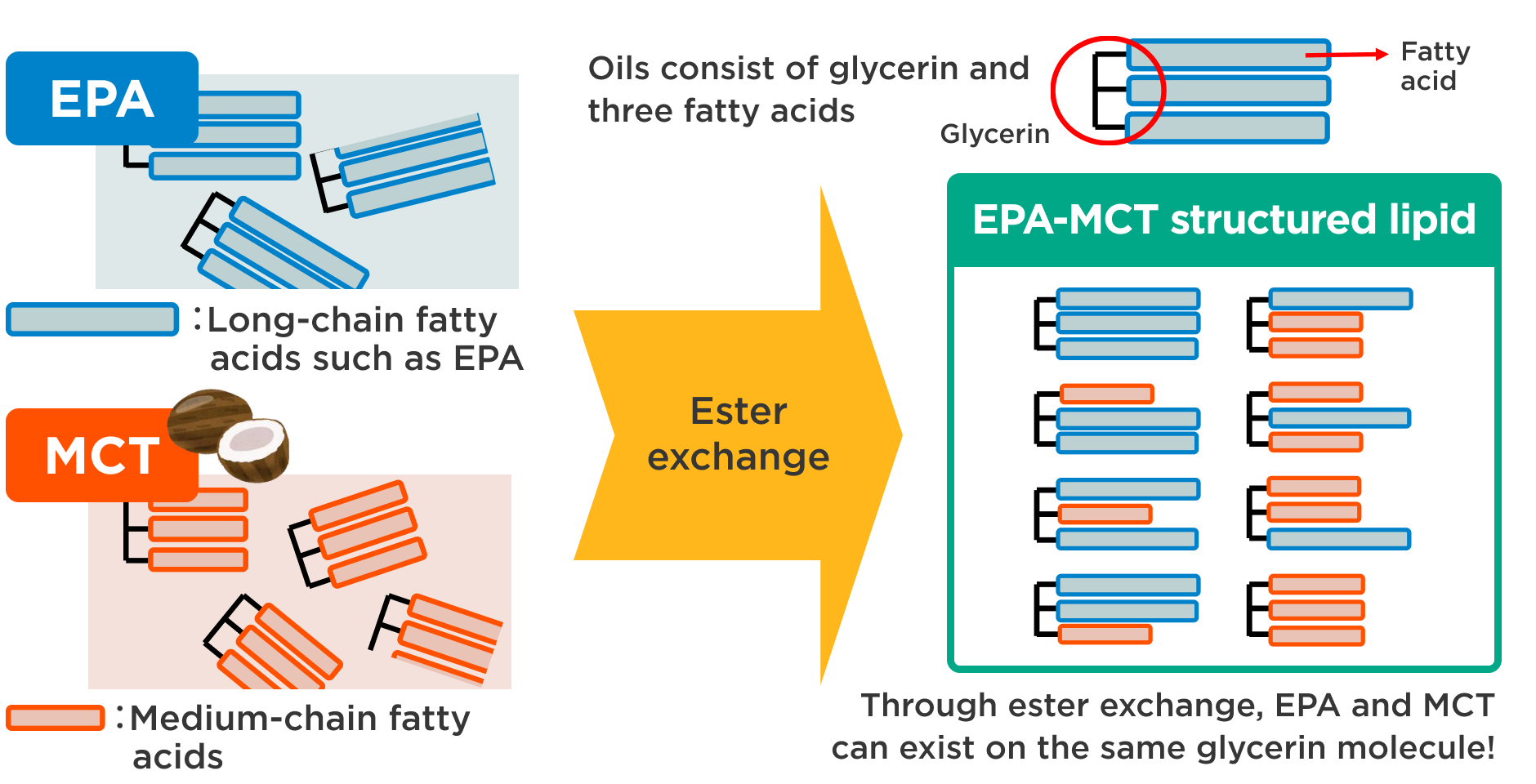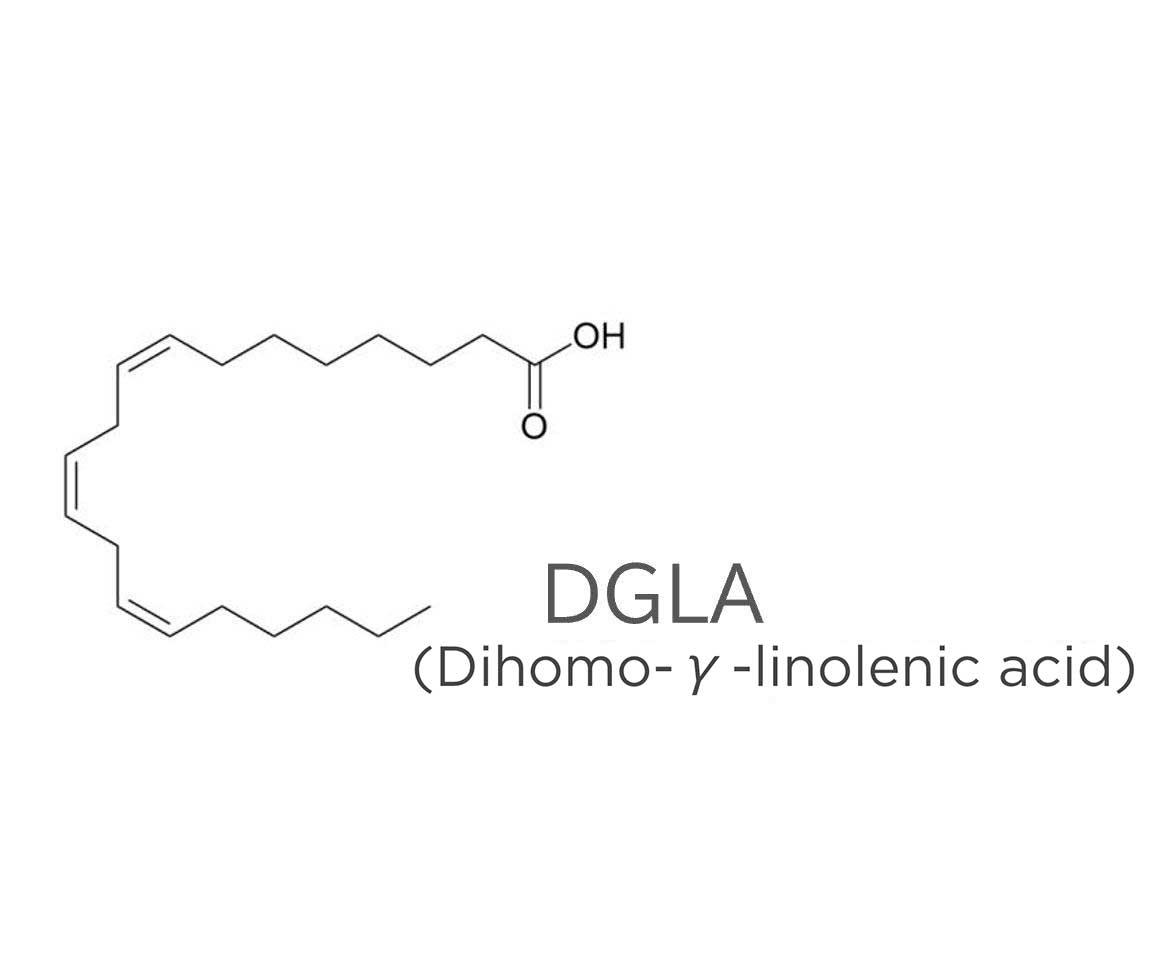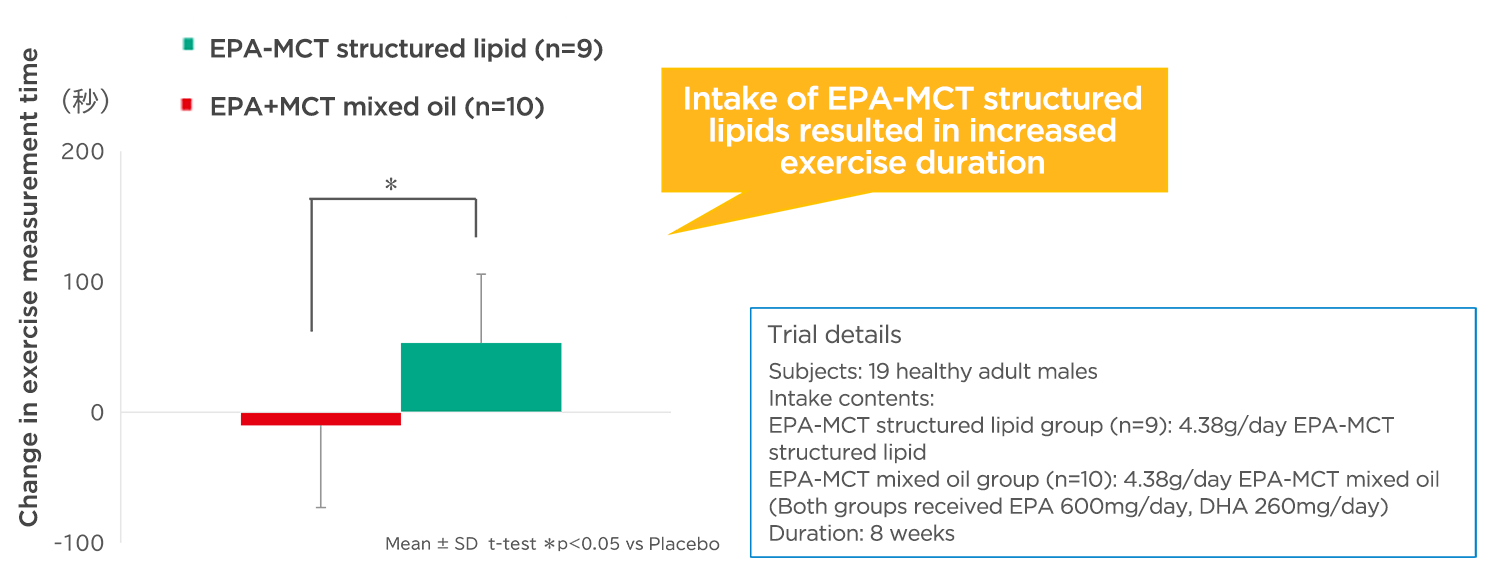
Research Approach
For many years, Nissui has extensively researched functional lipids, focusing primarily on EPA (eicosapentaenoic acid) and DHA (docosahexaenoic acid). While researchers worldwide study lipids, Nissui is also exploring new functional properties of lipids. We are advancing research on EPA-MCT structured lipids--compounds combining EPA with MCT (medium-chain triglycerides)--and investigating the health benefits of EPA, DHA, and DGLA (dihomo-gamma-linolenic acid), another fatty acid.


Figure 1. EPA-MCT structured lipid and dihomo-gamma-linolenic acid (DGLA)
Research Results
Research has shown that EPA-MCT structured lipids, created by structuring EPA and MCT onto the same glycerin molecule (structuring), demonstrate higher bioavailability compared to simple mixtures of EPA and MCT oils. This suggests EPA-MCT structured lipids may offer stronger effects across a broader range of applications than EPA alone. While EPA by itself had not been reported to increase exercise endurance time--one indicator of endurance capacity--intake of EPA-MCT structured lipids showed significant improvements in exercise duration.

Figure 2. Effects of EPA-MCT structured lipids on exercise duration improvement
Dihomo-gamma-linolenic acid (DGLA) is an omega-6 fatty acid that serves as a precursor to ARA (arachidonic acid). Based on ARA production technology developed since 2009, Nissui is advancing DGLA product development. Clinical research has demonstrated that DGLA is safely and effectively absorbed in healthy individuals. DGLA is known for its anti-inflammatory properties and shows promise in alleviating allergic symptoms associated with hay fever. Clinical trials have verified DGLA's effectiveness in reducing allergy symptoms.

Figure 3. DGLA's effects in reducing hay fever symptoms
Application of Research Results
We conduct our daily research driven by our desire to provide new value (functionality) that improves people's lives worldwide and contributes to better health. We will continue our research efforts, aiming to widely disseminate our findings to society and, in the future, develop commercial products that enhance people's quality of life (QOL).

Figure 4. Dissemination of research results
